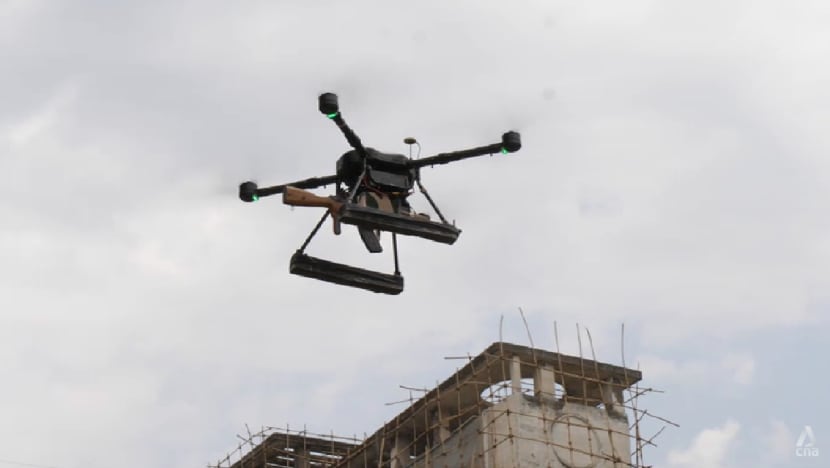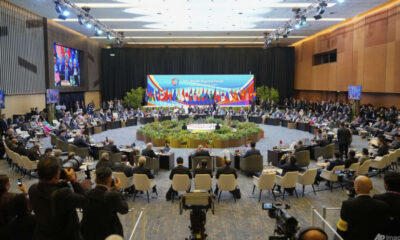World
India Accelerates Defence Self-Reliance with Startups and Tech

India is significantly enhancing its domestic defence production as part of Prime Minister Narendra Modi‘s ongoing initiative for self-reliance. Traditionally one of the world’s largest arms importers, with Russia as its primary supplier, India is now incentivising local startups, establishing defence manufacturing hubs, and relaxing procurement regulations. This strategic shift comes amidst persistent security concerns with neighbouring China and Pakistan. In the recent budget, India increased its defence expenditure by nearly 10 percent, amounting to approximately US$81 billion.
Strategic Autonomy and Military Operations
During a recent address, Modi highlighted how this drive towards self-sufficiency has granted India a level of strategic autonomy. He pointed to the successful execution of airstrikes on Pakistan during Operation Sindoor in May as a direct result of this self-reliance. “Imagine if we were not self-reliant; could we have executed Operation Sindoor with such swiftness?” he posed. The Prime Minister emphasized that without sufficient local production capabilities, India would face uncertainties about supply chains and equipment availability.
Despite these advancements, analysts caution that India’s reliance on foreign technology remains significant. The military still depends on Russian jets, French aircraft, and electronics sourced from the United States and Israel, creating potential vulnerabilities to geopolitical pressures and sanctions. Retired Colonel Rajneesh Singh, a research fellow at the Manohar Parrikar Institute for Defence Studies and Analyses, noted that deficiencies in radar and electronic warfare systems continue to hinder India’s defence production momentum.
To mitigate these challenges, New Delhi is actively pursuing technology transfers and partnerships with foreign suppliers, aiming to bridge the existing knowledge gap. Analysts observe that India has made strides in developing advanced military technologies. For instance, the BrahMos supersonic cruise missile system has garnered interest from at least 15 countries, particularly following its deployment during Operation Sindoor.
Emerging Defence Startups and Drone Capabilities
The growth of India’s defence startup ecosystem has been remarkable, with over 1,000 startups now operating in this sector, a substantial increase from just a few a decade ago. These startups are integral to the Modi government’s ambition of diversifying suppliers and enhancing domestic capabilities.
A key focus area is the rapid development of homegrown drones, which are becoming essential for strengthening India’s defensive posture. Some of these drones are compact enough to fit in a soldier’s backpack, enabling real-time monitoring of India’s extensive and porous borders. Vipul Joshi, Chief Financial Officer of Indian drone manufacturer ideaForge, remarked that these drones are vital for intelligence operations and detecting infiltration attempts. Earlier this year, ideaForge secured an order worth approximately US$16 million from the Indian Army for its hybrid mini unmanned aerial vehicle systems, facilitated by new initiatives designed to streamline procurement for innovative local firms.
The versatility of drones makes them suitable for a range of military applications, from reconnaissance to logistics support. Recent conflicts, such as the war in Ukraine and skirmishes along the India-Pakistan border, have underscored the effectiveness of drones in combat scenarios, particularly in countering traditional tank warfare. Observers note that the military demand for unmanned aerial vehicles is surging, as they are cost-effective, easily mass-produced, and capable of navigating challenging terrains without risking human lives.
As militaries increasingly incorporate loitering munitions—drones that hover in a designated area until striking a target—into their arsenals, India is well-positioned to lead in this evolving landscape of defence technology. The country’s diverse geographical features, from arid deserts to frigid mountain ranges, further enhance the strategic value of drone technology in its military operations.
-

 Lifestyle3 months ago
Lifestyle3 months agoHumanism Camp Engages 250 Youths in Summer Fest 2025
-

 Sports3 months ago
Sports3 months agoDe Minaur Triumphs at Washington Open After Thrilling Comeback
-

 Business4 months ago
Business4 months agoKenvue Dismisses CEO Thibaut Mongon as Strategic Review Advances
-

 Sports4 months ago
Sports4 months agoTupou and Daugunu Join First Nations Squad for Lions Clash
-

 Top Stories4 months ago
Top Stories4 months agoColombian Senator Miguel Uribe Shows Signs of Recovery After Attack
-

 World4 months ago
World4 months agoASEAN Gears Up for Historic Joint Meeting of Foreign and Economic Ministers
-

 Business4 months ago
Business4 months agoOil Prices Surge Following New EU Sanctions on Russia
-

 Health3 months ago
Health3 months agoNew Study Challenges Assumptions About Aging and Inflammation
-

 Entertainment3 months ago
Entertainment3 months agoDetaşe-Sabah Violin Ensemble Captivates at Gabala Music Festival
-

 Entertainment3 months ago
Entertainment3 months agoBaku Metro Extends Hours for Justin Timberlake Concert
-

 Business4 months ago
Business4 months agoU.S. House Approves Stablecoin Bill, Sends to Trump for Signature
-

 Top Stories4 months ago
Top Stories4 months agoRethinking Singapore’s F&B Regulations Amid Business Closures









